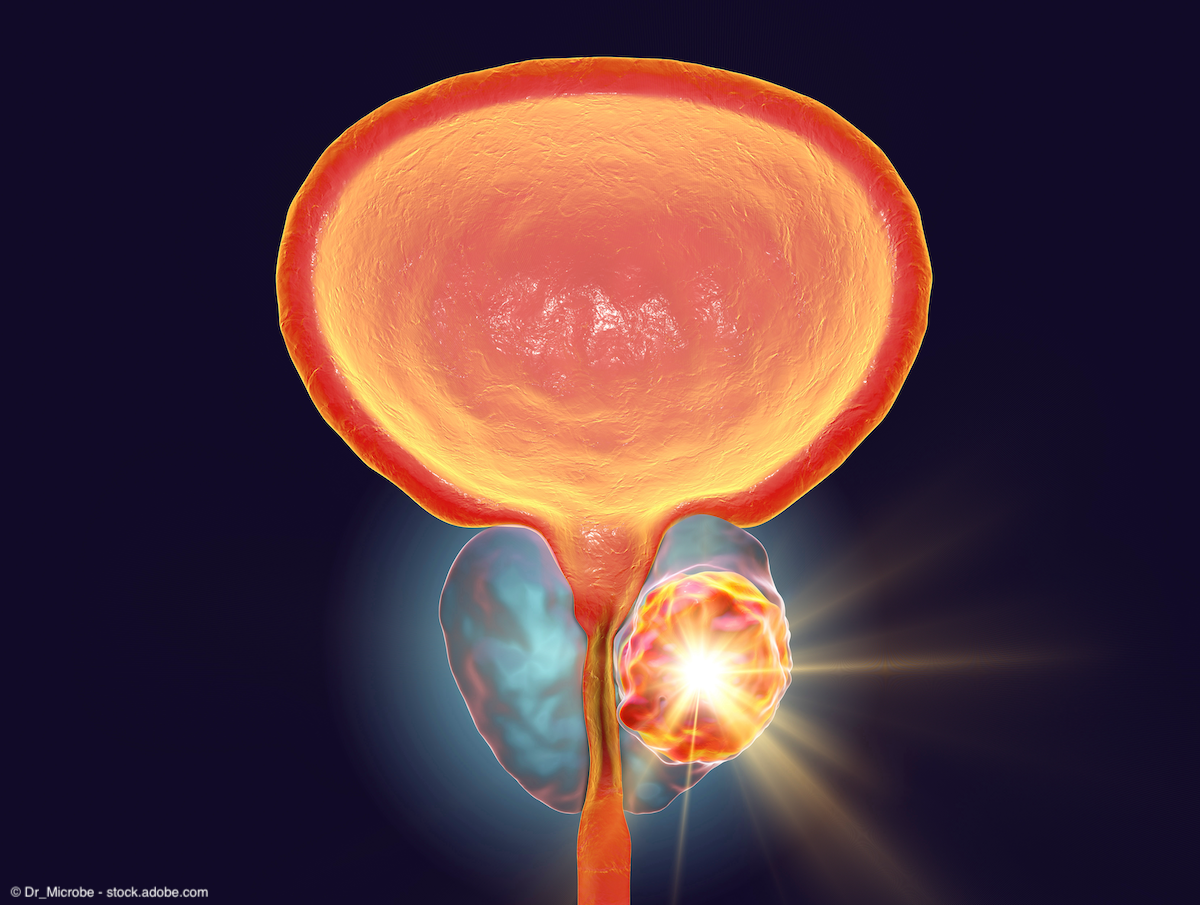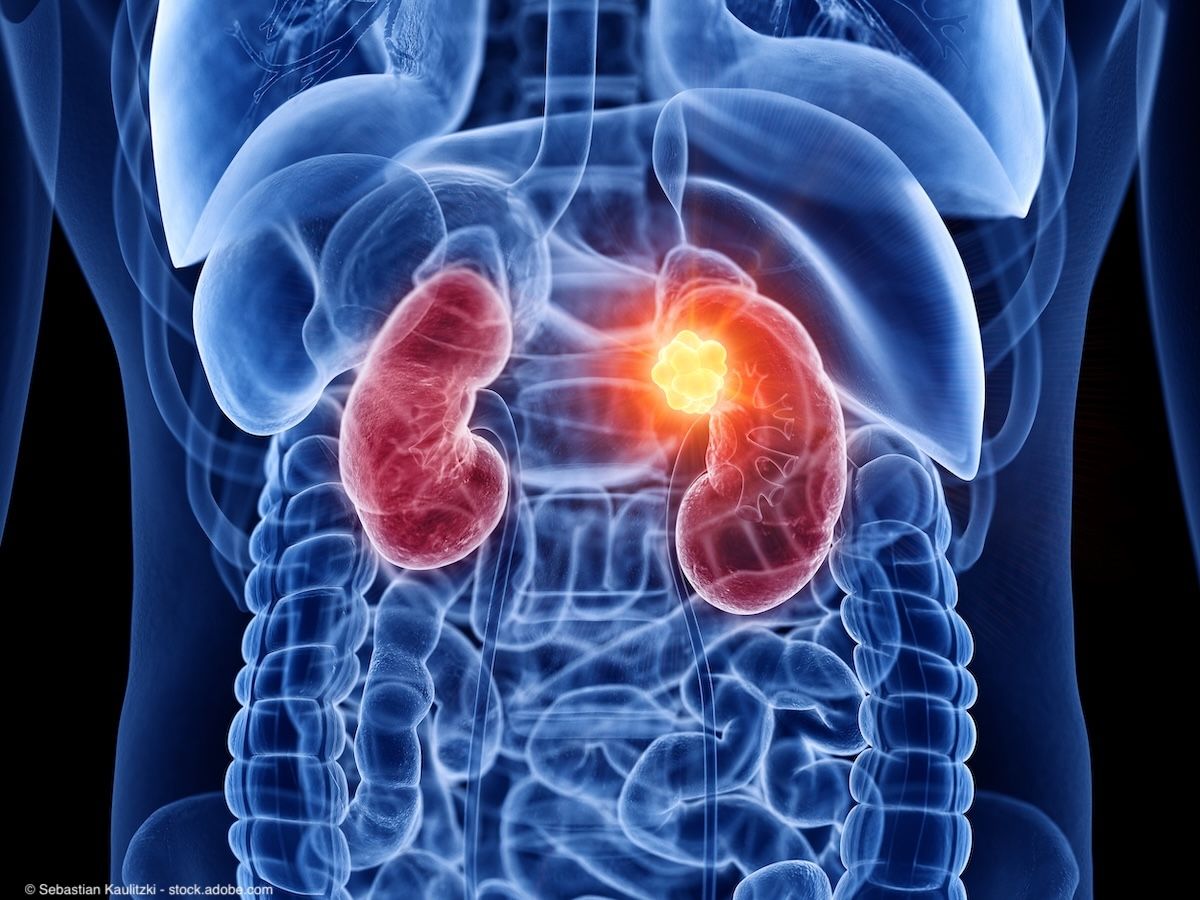Article
Study shows potential of PSMA-targeted therapy in non-metastatic CRPC
Author(s):
The PSMA-targeted monoclonal antibody J591 is effective in non-metastatic CRPC when it is radiolabeled with either 177Lu or 111In.
PSMA-targeted radioimmunotherapy may be an effective treatment strategy for patients with high-risk, non-metastatic castration-resistant prostate cancer (CRPC), according to findings from a phase 2 trial presented at the 2023 ASCO Genitourinary Cancers Symposium.1
There are currently no PSMA-targeted radiopharmaceuticals approved by the FDA to treat patients with non-metastatic CRPC.

The study showed that the PSMA-targeted monoclonal antibody J591 is effective in this patient population when it is radiolabeled with either 177Lu or 111In, although outcomes were better with 177Lu.
In the study, 50% of patients who received 177Lu-J591 were alive and metastasis-free at 18 months, compared with 24% of patients who received 111In-J591 (P = .066). Biochemical progression-free survival was 18.67 vs 8.87 months, respectively.
Significant PSA decline was observed in both groups. PSA50 response, or the percentage of patients with a PSA decline of 50% or higher from baseline, was 82% in the 177Lu-J591 arm vs 71% in the 111In-J591 arm. PSA90 was 50% vs 35% respectively.
“This [study] supports the development of anti-PSMA radioimmunotherapy for low-volume advanced prostate cancer, though the optimal radionuclide and targeting agent is unknown,” said Scott T. Tagawa, MD, MS, FACP, professor of clinical medicine and clinical urology and medical director of the Genitourinary Oncology Research Program at Weill Cornell Medicine.
The inclusion criteria for this double-blinded phase 2 study were for patients to have high-risk, nonmetastatic CRPC, defined as a PSA doubling time of less than 8 months and/or a PSA level above 20 ng/mL; a serum testosterone level below 50 ng/mL; and no metastases found on CT/MRI and bone scan.
Baseline characteristics were well balanced across the treatment arms. Overall, the study accrued 55 patients with a median age of 68 years (range, 52-88). Prior therapy included prostatectomy (75%), primary radiation (22%), and local salvage therapy (22%). The median baseline PSA was 8.0 ng/mL (range, 1-78) and the median PSA doubling time was 3.0 months (range, 0.87-7.85).
All patients received a 4-week run-in with ketoconazole/hydrocortisone (Keto/HC). Patients were then randomized in a 2:1 ratio to 177Lu-J591 or 111In-J591. Keto/HC could be continued per decision of the treating physician.
Explaining the difference between 177Lu and 111In, Tagawa said, “177Lu is a predominantly β-emitting radionuclide and also has γ emission which allows imaging. 111In is predominantly a γ emitter, also with some auger emission for therapy.”
Patients were stratified by investigational site and primary therapy. Imaging follow-up was done every 6 months until PSA progression, and then every 3-months thereafter. The primary end point was 18-month metastasis-free survival.
Regarding toxicity, Tagawa said, “As expected, there were more grade 3/4 hematologic adverse events (AEs) with 177Lu.” Grade 3/4 neutropenia occurred in 57% of the 177Lu group (including 1 case of febrile neutropenia) vs 11% of the 111In group. Thrombocytopenia occurred in 77% vs 11% of the 2 groups, respectively.
In contrast, there were not more grade 3/4 non-hematologic AEs with 177Lu.
Currently in the United States, there is one FDA-approved PSMA-targeted radioligand therapy, lutetium Lu 177 vipivotide tetraxetan (Pluvicto), which is approved for PSMA-positive metastatic CRPC. There are no PSMA-targeted radiopharmaceuticals approved to treat non-metastatic CRPC.
Reference
1. Tagawa ST, Thomas C, Adra N, et al. Randomized, double-blinded phase II study of ketoconazole (keto), hydrocortisone (HC), and anti-PSMA antibody J591 labeled with 177Lu or 111In in patients (pts) with high-risk non-metastatic (met) castration-resistant prostate cancer (M0 CRPC). J Clin Oncol 41, 2023 (suppl 6; abstr LBA21). doi: 10.1200/JCO.2023.41.6_suppl.LBA21
Newsletter
Stay current with the latest urology news and practice-changing insights — sign up now for the essential updates every urologist needs.
















